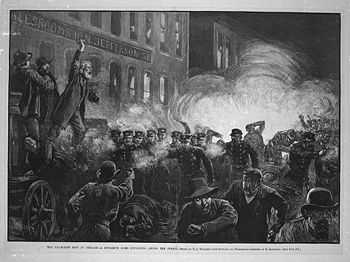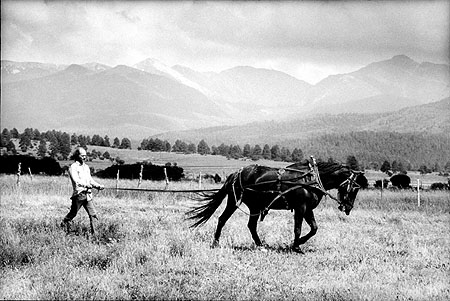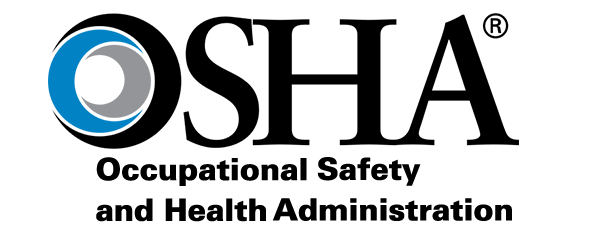
This Day in Labor History: May 4, 1886. The Haymarket bombing takes place when police move in on anarchists in Chicago. Let's talk about the complexity of this event, not hero worship, noting the horrors of the Gilded Age police and trying to get at the real history here. 

The mid-1880s saw the native-born working class struggling to understand the new labor system of the Gilded Age.
The promises of mutually respectful employer-employee relations at the center of early Republican free labor ideology shown to be a farce and workers living increasing desperate lives in dirty and dangerous factories and condemned to poverty created class conflict.
By the 1880s, the American working-class sought to even the playing field between employer and employee
The Knights of Labor promised the eight-hour day; in a period when labor looked for a single panacea to solve all problems rather than a deep class analysis of labor-employer relations, the working-class jumped to the idea.
The Knights, led by Terence Powderly, grew rapidly in the mid-1880s, even though Powderly didn’t really envision the organization as a radical challenge to capitalism.
Still, “Eight Hours for Work, Eight Hours for Sleep, Eight Hours for What You Will” became the slogan for a million or more Americans.
But Powderly’s control over the organization was tenuous and with the Knights defined as open to all workers, it meant that anarchists and other radicals could easily join and then try to convert workers to their cause.
The center of 8-hour organizing was in Chicago, where small numbers of radicals began organizing workers to demand the 8-hour day and threaten a general strike if denied. On May 1, 1886, between 300,000 and 500,000 workers walked off their job around the nation.
Probably 80,000 of those workers were in Chicago. The police responded with sadly predictable violence. On May 3, police murdered 6 strikers at the McCormick Harvesting Machine plant.
The McCormick workers had been battling with their employer for a year, who had hired Pinkertons to beat them. They combined their already existing struggle with the 8-hour day to become some of the most respected working-class militants in the city.
Responding to the murders, anarchists called a march to protest police violence the next day at Haymarket Square, which maybe 1,500 people attended. It was not a particularly large rally for the moment.
The truth was that these anarchists did not represent many of the workers in Chicago. A few were working within the 8-hour day movement. But the anarchist movement was mostly made up of German immigrants, often fleeing political violence at home.
They came to the U.S. and their view of the American working class is that they were dupes. So they organized in Chicago but mostly didn’t even bother trying to communicate with American workers. Most of their writings remained in German, for example.
Moreover, many came under the influence of man named Johann Most, who propagated what became known as “the propaganda of the deed.”
This meant that violence–even deaths–that hurt innocents was politically justifiable because it would spur greater revolutionary activity and lead to the overthrow of the corrupt capitalist state.
To say this was a morally dubious position is an understatement. But this was the ideology of many Chicago anarchists, who openly talked of violence in their speeches and publications.
Among the speakers was Albert Parsons. Born in Alabama, Parsons grew up in frontier Texas in the 1850s. Although he volunteered for the Confederacy as a young man, he became a southern white Republican in the years after the war.
Parsons repudiated his Confederate past and supported not only the principles of Reconstruction but voting rights for African-Americans.
He then married an African-American woman named Lucy Parsons, had a long and complex career of her own that included everything from being at the founding of the IWW to leading unemployment marches in Chicago.
On the other hand, Lucy Parsons later had her son institutionalized for the rest of his life when he wanted to join the military. She also despised Emma Goldman because the Goldman talked about sex.
Anyway, Parsons and Gonzalez were forced out of Texas due to intolerance to both their political beliefs and their interracial marriage. They moved to Chicago where they both wrapped themselves in the political maelstrom of the time.
Parsons became a socialist newspaper editor, attended the first convention of the National Labor Union in 1876, and in 1880, withdrew from electoral politics to immerse himself in anarchism.
He became obsessed with the 8-hour day and in 1884 began an anarchist newspaper in support of the idea.
On the other hand, the attention Parsons receives is the ultimate example of the exception proving the rule; it's because he was almost the only native born American who had converted to the German-style of anarchism dominant in Chicago in 1886.
Albert Parsons gave an hour-long speech and by the time he finished, only around 500 people remained. As Samuel Fielden closed the rally with one last speech, the police marched into the square to end it by force.
When the police moved in on the marchers, someone threw a bomb. The police responded by firing into the marchers, killing a disputed number (probably between 4 and 8) before cease-firing, fearful they would shoot each other in the darkness and confusion.
Maybe 50 people on both sides were wounded.
The media reacted with anti-radical hysteria. The Chicago Tribune called to bar any “foreign savages who might come to American with their dynamite bombs and anarchistic purposes.”
Unsure who actually threw the bomb but assuming it was a conspiracy, authorities tried eight of Chicago’s leading anarchists for the murders. That included Albert Parsons and August Spies, both of whom definitely did not throw the bomb.
Parsons was actually in a nearby bar drinking a beer after his speech. Louis Lingg openly admitted making bombs but said he would have admitted it had he thrown it.
Parsons argued that someone working for the corporations threw the bomb to provide an excuse for police violence and repression.
This is extremely unlikely and almost certainly a false claim, but radicals have held onto it because of the challenge that the truth might provide.
This is extremely unlikely and almost certainly a false claim, but radicals have held onto it because of the challenge that the truth might provide.
To be blunt, the Chicago anarchists were nowhere near a big enough threat to the forces of order that the police would kill a bunch of cops to set them up.
We will never know for sure who threw the bomb.
The most likely candidate was an anarchist named Rudolph Schnaubelt, who fled the nation immediately after the killings and probably lived the rest of his life in Argentina.
The most likely candidate was an anarchist named Rudolph Schnaubelt, who fled the nation immediately after the killings and probably lived the rest of his life in Argentina.
What we can say is that none of the people convicted of throwing the bomb or being part of the conspiracy were guilty.
Despite the lack of evidence, seven defendants received the death penalty and another fifteen years in prison for conspiracy to commit murder.
Despite the lack of evidence, seven defendants received the death penalty and another fifteen years in prison for conspiracy to commit murder.
Louis Lingg committed suicide the day before his execution, while Parsons, Spies, Adolph Fischer, and George Engel were hanged on November 11, 1887.
The aftermath of Haymarket completely destroyed the Knights of Labor and the 8-hour movement. Powderly repudiated the violence but was also totally unprepared for every part of the situation, from the size of the Knights to the official repression of labor radicalism.
Haymarket isn't the only reason the Knights declined, but it was a large factor.
The Knights crumbled soon after and though workers still dreamed of the 8-hour day, it would take another half-century and countless dead workers to see it become a reality.
The bigger question to me is why there is no other event in labor history that makes people as defensive as the Haymarket. It doesn't make much sense--someone threw the bomb! It was 137 years ago! Why does this matter today?
135 years ago actually. Math and I are not friends.
In any case, I have a strong belief in taking workers at their word. There are lots of cases of anarchists using bombs during these decades. Why would we be outraged at the idea that an anarchist threw a bomb when they wrote about doing so ALL THE TIME?
We can walk and chew gum at the same time. We can say that the cops were completely evil, that the people executed were completely innocent, and that the Propaganda of the Deed was a vile doctrine that convinced someone to throw a bomb.
I also ask this question--what right do radicals have to co-opt a strike for their own purposes? Why would we celebrate this? Did Alexander Berkman have the right to kill Henry Clay Frick when he had no contact with the Homestead strikers in 1892? No!
If we believe in worker power then we cannot take independent actions that hurt worker movements, whether at the Haymarket, Berkman's failed assassination attempt, or black bloc anarchists hijacking the Seattle WTO protests.
It should go without saying at this point that I am strongly anti-anarchist. I believe anarchism is the best friend capitalism ever had, siphoning off disciplined responses against capitalism into individualistic actions that are counterproductive.
And what is more closely related to cultural forms of capitalism than promoting the individual's choice to act as they see fit as opposed to collective, disciplined political response?
Anyway, that's my take on Haymarket. I am sure that lots of Twitter left people will hate it because they are deeply committed to their individualistic forms of leftism that in fact just reinforce a capitalist order.
Back tomorrow to discuss much greater heroes of May 1886 than the Haymarket anarchists--the rank and file workers of Milwaukee striking to improve their lives.
• • •
Missing some Tweet in this thread? You can try to
force a refresh






